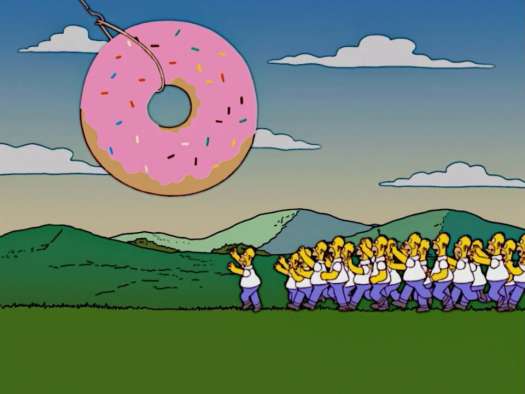Set during the Japanese invasion of Singapore in 1942, Aaron Wilson's deliberately simplistic, albeit highly observant, experimental feature film debut, Canopy, opens with Jim (Khan Chittenden), an Australian airman dangling from a tree, supported only by a parachute. Immersed in the experience of war, he quickly cuts himself down, risking injury, fleeing into a vast unknown wilderness occupied by the enemy.
Before running into a Chinese-Singapore resistance fighter (Mo Tzu-Yi) suffering from an injury almost halfway through the film, Canopy is focused entirely on Jim's experience alone in the jungle. Wilson, uninterested in establishing intentional or contrived forward momentum, focused on immersing us in any given moment.
The constant drone of insects and occasional ruffle of branches, exploiting the advent of surround sound to maximum effect, create a quiet, persisting sense of palpable tension. Distant gunfire and the occasional plane overhead break up the silence sporadically, reminding Jim (and us) that potential danger lies in all directions and could erupt from a single misstep or poorly calculated turn.
Once Seng (Mo) enters the picture, this trajectory and pervading style doesn't shift. Seng doesn't speak English, leaving the men to sign at each other and share their meager rations when not tending to an injury or threat of potential capture. The character is still very much the environment and the situation; the endless maze of jungle and intricate sound design are as significant as the two men, neither of whom are given any conventional development beyond survival instinct and reaction.
As an experiment in storytelling and an exercise in impeccable sound, this very slight, very gradual work of aesthetic minimalism does provoke some thought. In eschewing narrative convention and eliminating a thematic or political backdrop, Wilson forces the spectator to observe and engage with the core elements comprising a cinematic text.
Beyond visceral and experiential reaction, analysis and emotion are left out of the picture, leaving composition, editing, soundtrack and the carefully calculated movements—hushed footsteps through mud, the subduing of audible breathing when enemies are around—to step to the forefront. It alerts the audience to the filmmaking decisions rather than the experience of reacting to and immersing oneself in the act of cinema.
To a degree, Wilson has succeeded in challenging the form. He's created a text that lends itself well to film theory and discourse by forcing the question of cinematic grammar (the basic structure of film is related to its history and form, stemming from the template of theatre and literature confined by the forced perspective of a camera and the limitations of film stock). But what he's also done is remove identification and the emotional component, leaving us to watch actions and moments that have no relating context beyond rudimentary, instinctual identification with perilous situations.
Resultantly, the cold, ascetic sensibilities leave the outcome feeling inconsequential. Whether this stems from our mass social need for reassurance, having only traditional modes of catharsis and storytelling techniques to draw from, or it's a result of Wilson's removed, often stationary and unambiguous direction—never taking advantage of subjectivity or attempting to expand on the idea of perspective—is debatable. Regardless, Canopy, while interesting in theory, is also quite dull.
(Finer)Before running into a Chinese-Singapore resistance fighter (Mo Tzu-Yi) suffering from an injury almost halfway through the film, Canopy is focused entirely on Jim's experience alone in the jungle. Wilson, uninterested in establishing intentional or contrived forward momentum, focused on immersing us in any given moment.
The constant drone of insects and occasional ruffle of branches, exploiting the advent of surround sound to maximum effect, create a quiet, persisting sense of palpable tension. Distant gunfire and the occasional plane overhead break up the silence sporadically, reminding Jim (and us) that potential danger lies in all directions and could erupt from a single misstep or poorly calculated turn.
Once Seng (Mo) enters the picture, this trajectory and pervading style doesn't shift. Seng doesn't speak English, leaving the men to sign at each other and share their meager rations when not tending to an injury or threat of potential capture. The character is still very much the environment and the situation; the endless maze of jungle and intricate sound design are as significant as the two men, neither of whom are given any conventional development beyond survival instinct and reaction.
As an experiment in storytelling and an exercise in impeccable sound, this very slight, very gradual work of aesthetic minimalism does provoke some thought. In eschewing narrative convention and eliminating a thematic or political backdrop, Wilson forces the spectator to observe and engage with the core elements comprising a cinematic text.
Beyond visceral and experiential reaction, analysis and emotion are left out of the picture, leaving composition, editing, soundtrack and the carefully calculated movements—hushed footsteps through mud, the subduing of audible breathing when enemies are around—to step to the forefront. It alerts the audience to the filmmaking decisions rather than the experience of reacting to and immersing oneself in the act of cinema.
To a degree, Wilson has succeeded in challenging the form. He's created a text that lends itself well to film theory and discourse by forcing the question of cinematic grammar (the basic structure of film is related to its history and form, stemming from the template of theatre and literature confined by the forced perspective of a camera and the limitations of film stock). But what he's also done is remove identification and the emotional component, leaving us to watch actions and moments that have no relating context beyond rudimentary, instinctual identification with perilous situations.
Resultantly, the cold, ascetic sensibilities leave the outcome feeling inconsequential. Whether this stems from our mass social need for reassurance, having only traditional modes of catharsis and storytelling techniques to draw from, or it's a result of Wilson's removed, often stationary and unambiguous direction—never taking advantage of subjectivity or attempting to expand on the idea of perspective—is debatable. Regardless, Canopy, while interesting in theory, is also quite dull.




